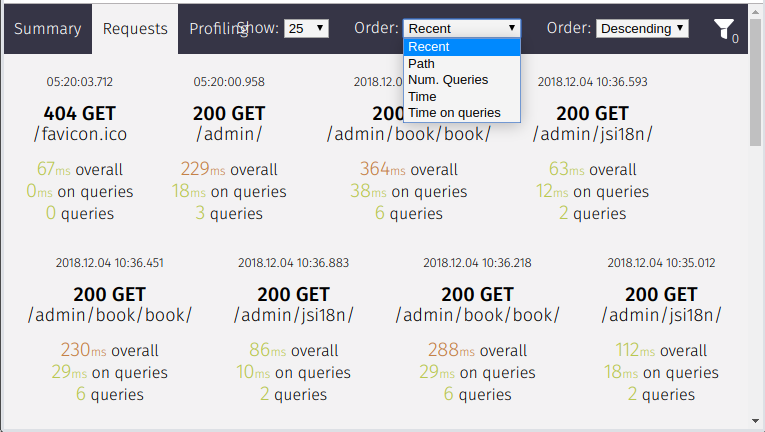Latest news about Bitcoin and all cryptocurrencies. Your daily crypto news habit.
Finding High-impact Performance Bottlenecks In Django

Originally published at https://avilpage.com/2018/12/django-bottleneck-performance-scaling.html
Introduction
When optimizing the performance of web application, a common mistake is to start with optimizing the slowest page(or API). In addition to considering response time, we should also consider the traffic it is receiving to prioritize the order of optimization.
In this article, we will profile a Django web app, find high-impact performance bottlenecks and then start optimizing them to yield better performance.
Profiling
django-silk is an open source profiling tool which intercepts and stores HTTP requests data. Install it with pip.
pip install django-silk
Add silk to installed apps and include silk middleware in django settings.
MIDDLEWARE = [ ... 'silk.middleware.SilkyMiddleware', ...]
INSTALLED_APPS = ( ... 'silk')
Run migrations so that Silk can create required database tables to store profile data.
$ python manage.py makemigrations$ python manage.py migrate$ python manage.py collectstatic
Include silk urls in root urlconf to view the profile data.
urlpatterns += [url(r'^silk/', include('silk.urls', namespace='silk'))]On silk requests page(http://localhost:8000/silk/requests/), we can see all requests and sort them by overall time or time spent in the database.
Silk creates silk_request table which contains information about the requests processed by Django.
$ pgcli
library> \d silk_request;
+--------------------+--------------------------+-------------+| Column | Type | Modifiers ||--------------------+--------------------------+-------------|| id | character varying(36) | not null || path | character varying(190) | not null || time_taken | double precision | not null |...
We can group these requests data by path, calculate the number of requests, average time taken and impact factor of each path. Since we are considering response time and traffic, impact factor will be the product of average response time and number of requests for that path.
library> SELECT s.*, round((s.avg_time * s.count)/max(s.avg_time*s.count) over ()::NUMERIC,2) as impact FROM (select path, round(avg(time_taken)::numeric,2) as avg_time, count(path) as count from silk_request group by PATH) s ORDER BY impact DESC;
+-------------------------+------------+---------+----------+| path | avg_time | count | impact ||-------------------------+------------+---------+----------|| /point/book/book/ | 239.90 | 1400 | 1.00 || /point/book/data/ | 94.81 | 1900 | 0.54 || /point/ | 152.49 | 900 | 0.41 || /point/login/ | 307.03 | 400 | 0.37 || / | 106.51 | 1000 | 0.32 || /point/auth/user/ | 494.11 | 200 | 0.29 |...
We can see /point/book/book/ has the highest impact even though it is neither most visited nor slowest view. Optimizing this view first yields in overall better performance of web app.
Conclusion
In this article, we learned how to profile the Django web app and identify bottlenecks to improve performance. In the next article, we will learn how to optimize these bottlenecks by taking an in-depth look at them.
More tips and tricks about Django are available at https://avilpage.com/tags/django-tips-tricks.html
Finding High-impact Performance Bottlenecks — Django Tips was originally published in Hacker Noon on Medium, where people are continuing the conversation by highlighting and responding to this story.
Disclaimer
The views and opinions expressed in this article are solely those of the authors and do not reflect the views of Bitcoin Insider. Every investment and trading move involves risk - this is especially true for cryptocurrencies given their volatility. We strongly advise our readers to conduct their own research when making a decision.
